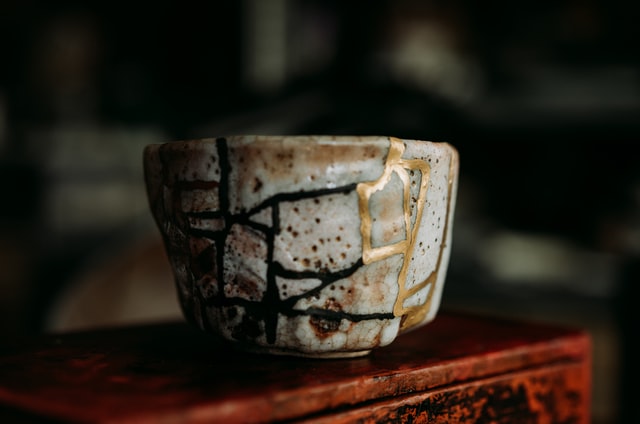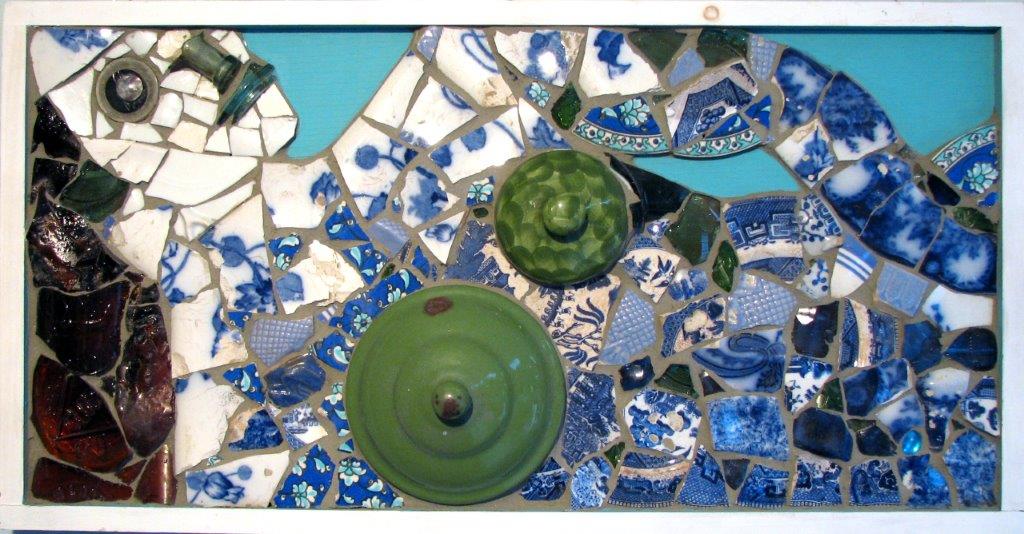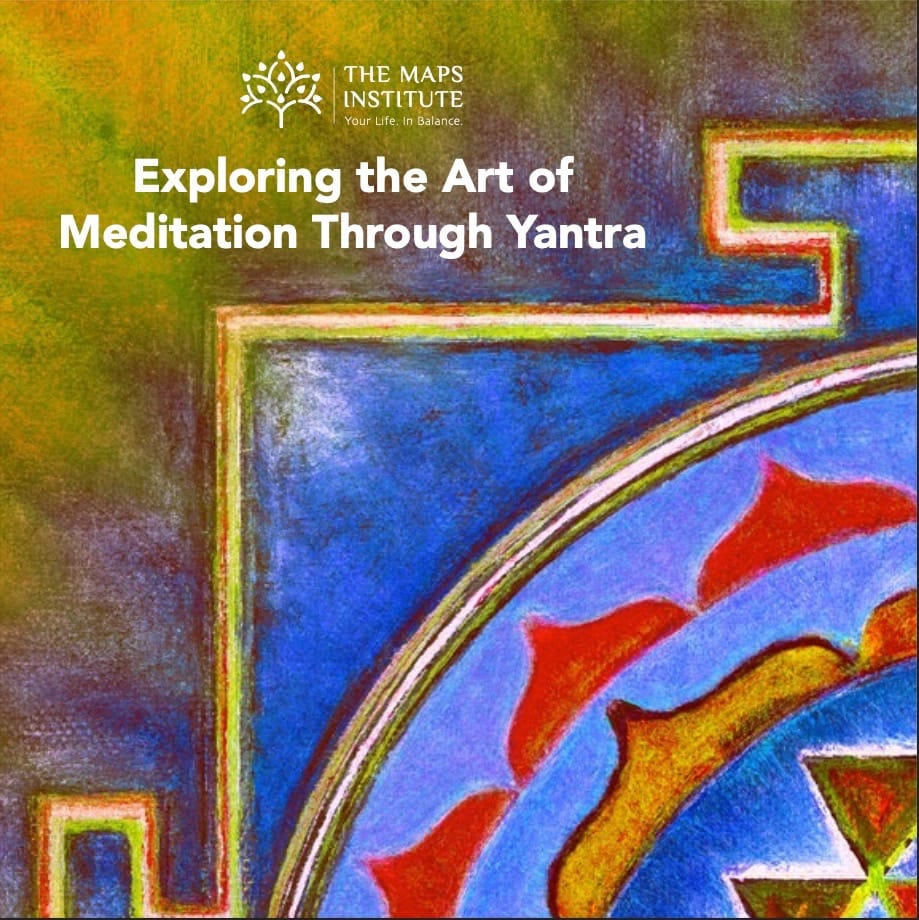Do you ever feel like your world is crumbling into little pieces, that stress and anxiety are hanging over you like a dark cloud?
If you do (and don’t we all), what if I told you there was a way to reassemble those fragmented bits, to create a sense of wholeness, and to find the calm within the storm?
Using a combination of art and meditation you can create a beautiful mosaic of life. Anita Krizzan described this concept beautifully: “We are mosaics. Pieces of light, love, history, stars…Glued together with magic and music and words.”
Whether you are experiencing health issues, job loss, divorce, or attempting to navigate the changes that have come with living through this pandemic — this practice of taking the broken bits of our life and turning them into something beautiful is a pathway to healing what’s broken within you.
No, Not Wasabi…But Rather, Wabi-Sabi
This practice of assembling broken bits into something new and beautiful has deep and wide roots. For instance, the Japanese have a traditional perspective on aesthetics called wabi-sabi. It is a worldview that is centered around the acceptance of imperfection and transience. In essence, wabi-sabi is a practice of finding the beauty and perfection in the imperfect, impermanent, and incomplete.
There is even a Japanese art form called Kintsugi where broken pieces of pottery are put back together with gold in between. The “scars” become part of the design itself. Tiffany Ayuda explains, “It is built on the idea that in embracing flaws and imperfections, you can create an even stronger, more beautiful piece of art.”
For these artists, it reveals a way to heal and shows you that you are not diminished but rather enhanced by your own golden cracks.

Have You Followed the Mosaic Trail?
Finding beauty amid the broken pieces of life, however, can take many forms. Have you ever come across a lamppost, a storefront, or a bench covered with found objects, broken pieces of glittering glass, and pottery?
Not only is this creative endeavor a way to beautify and recycle, but it is also a way for the artist to find inner calm and help bring together fragmented pieces of their lives.
In New York City’s East Village, there is a collection of colorfully adorned sidewalks, planters, lamp posts, facades, and storefronts called the Mosaic Trail. It was started as a guerrilla art project by Jim Power, a once-homeless, struggling Vietnam vet.
Creating these assemblages helped him cope with PTSD from his time in the service. Also known as “The Mosaic Man,” Power has become a bit of an NYC legend, with guides offering tours of his work. It was his drive, creative process, and feelings of self-fragmentation that resulted in his now famous and inspiring endeavors.
During the pandemic, his continuing work on these mosaic art projects helped him through the troubling times. He also understood the effects his art was having on the community and visitors, “Having this out here, it makes people tranquil,” he explained to the website Bedford + Bowery.
My Unexpected Mosaic Art Journey
My own journey into this practice and into exploring mosaics began at a pond on my parents’ property many years ago.
A hydroelectric company created a pond in the process of damming the Wallkill River to generate power. Locals shared that in the process they also submerged an old and deserted hamlet called Saltpeterville.
One summer there was high usage of electricity and the level of the pond was very low. When I walked down to the water’s edge, I noticed pieces of glass and broken fragments of pottery embedded in the now-exposed clay-like surface.

I was mesmerized and started collecting these little treasures. They didn’t have a purpose — they just felt like enchanting little pieces of history.
I even asked the New York State Museum in Albany to analyze them. They explained that they were from the 1850s. And now, many years later, these pieces of the past had resurfaced from the flooded hamlet to tell their story.
And in the process of telling theirs, they gave me an opportunity to create my own.
I knew that I wanted to create a piece of mosaic art from my treasures but was intimidated by the unknown process. Eventually, I began piecing together these beautiful colored bits of history, composing a completely new whole — bringing new life to items that had once been discarded. And, in doing so, I discovered the healing power of this process.
The Therapeutic Effect of Mosaic Art
Creating mosaics is not only rewarding as an art form, many also find it therapeutic, soothing, and stress-reducing.
I have found its benefits to be similar to those that I get from practicing yoga. And, I have to admit, I also find it to be very cathartic to take a hammer to pottery, smashing it into smaller bits in the hope of finding the right shape and size to fit into my creations!
The grouting process also feels like its own type of calming, healing magic. This involves covering the entire board of now-assembled fragments with a thick, cement-like substance, working it into the cracks and crevices, and then sponging it off to reveal the finished piece. During this unearthing revelation, there is always an element of surprise as well as a flurry of emotions such as gratification, happiness, and pride.
It is very rewarding knowing that I have recycled these random broken fragments into something brand-new, giving them new life and creating a new experience — an apt metaphor for the healing process that can occur through this practice.
Meditation Through Other Art Forms
And if mosaics aren’t your pace, there are many meditative and relaxing practices that involve color and art.
In Tibet, there is a tradition of creating mandalas from brightly colored sand. Mandalas are geometric configurations of symbols. They usually represent a spiritual journey, going through the layers, starting from outside to the inner core. This process of using sand to create these designs is slow and requires much patience and precision. It is pursued in a meditative manner. After the mandalas are completed, the intricately decorated surfaces are cleared, all sand wiped away, allowing the process to start again. This illustrates the concept of impermanence.
Yantras, traditionally painted, are 2-dimensional geometric diagrams filled with symbolism and have traditionally been deeply seated in spirituality. They are used as an aid to meditation and are often used for decorating the entrances of houses and temple floors.

Get Your Free eBook!
Explore the art of meditation through the practice of yantra creation — using art and color to explore your emotions and energy. This short eBook will help you get started on your healing and exploration journey!
In a modern day context, Yogi’s have expanded the Yantra practice to be more of an exploration of the energetic experience — allowing it to be more meditation-centric, rather than religious. Additionally, creating your own yantra is a great gateway to meditation, particularly if you’ve struggled with it. (If you want to learn how to create your own Yantra, click here to download our free e-book!)
Ready to Start Your Healing Art Journey?
By adopting a yantra or meditative creative arts practice, not only will you design a work of art, but you might find the process of creation to be healing and meaningful.
Approached mindfully in this way, it is a powerful metaphor for healing ourselves that also teaches us an important lesson, perfectly articulated by NBC’s Ayuda, “Sometimes in the process of repairing things that have broken, we actually create something more unique, beautiful and resilient.”
And sometimes, going through this creative mending process can help make us calmer, stronger, and more resilient as well.
Image credits: Mario Cruz, Motoki Tonn, and the author Heidi Knecht-Seekgers.
